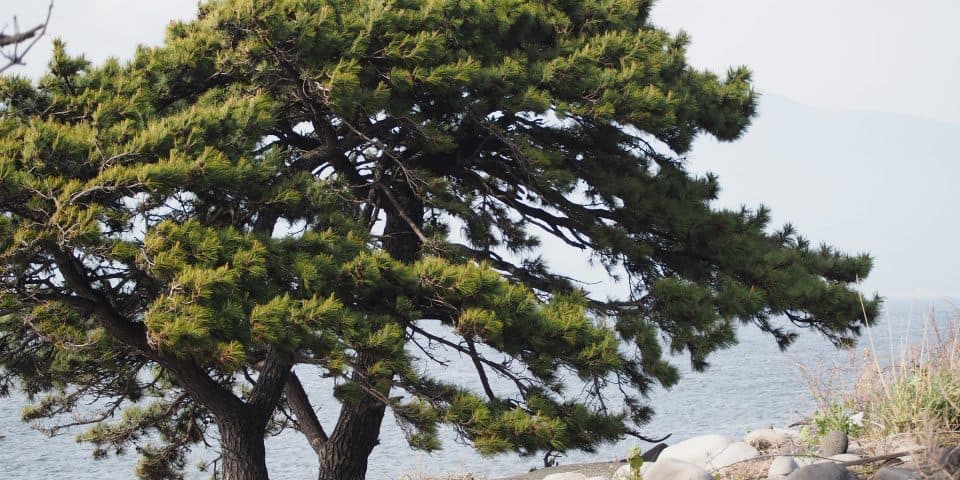High salt levels in the soil can prevent your tree from absorbing enough water, burn its leaves, and in worst cases, lead to leaf drop and ultimately the death of your tree. If there are high salt levels in the soil in your area, the best thing you can do is plant salt-resistant trees in your garden.
Contents
- 1. White Oaks (Quercus alba)
- 2. Sunburst Honey Locust (Gleditsia triacanthos)
- 3. Japanese Tree Lilac (Syringa reticulata)
- 4. Eastern Red Cedar (Juniperus virginiana)
- 5. Southern Magnolia (Magnolia grandiflora)
- 6. Ginkgo (Ginkgo biloba)
- 7. Japanese Black Pine (Pinus thunbergii)
- 8. Devilwood (Cartrema americana)
Many different species of trees have varying degrees of salt resistance. The following are a select few trees that have some form of salt resistance:
- White Oaks
- Sunburst Honey Locust
- Japanese Tree Lilac
- Eastern Red Cedar
- Southern Magnolia
- Ginkgo
- Japanese Black Pine
- Devilwood
Many different types of trees range in their resistance to salt spray and high salt levels in the soil. The following list will discuss some of these salt-resistant trees.
1. White Oaks (Quercus alba)
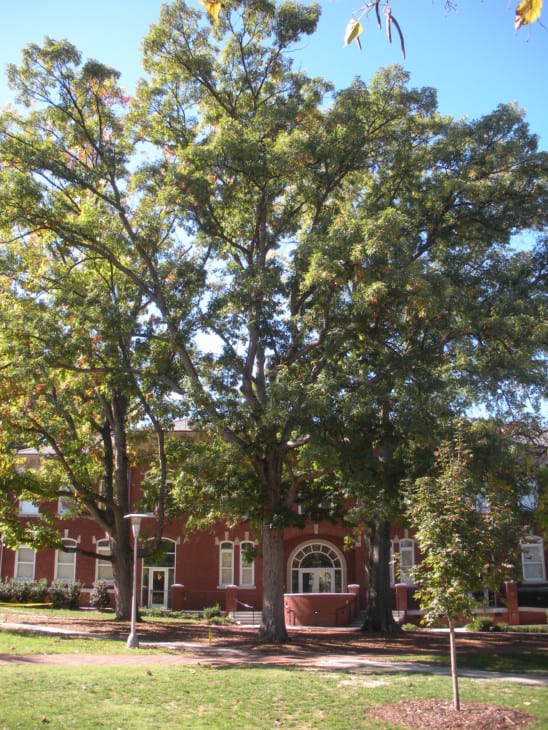
The white oak is native to North America, appearing throughout the forests of Eastern North America. This tree prefers hardiness zones of 3 – 9, reaches 60 – 100 feet tall, and grows 50 – 90 feet wide. This tree prefers acidic to deep neutral soil and will tolerate high salt levels.
The white oak is a deciduous tree, and it produces beautiful yellow-green flowers in May. If you want to attract butterflies, birds, and other pollinators into your garden, the white oak is the way to go.
Before you choose to plant this tree in your garden, make sure it will have enough space to grow to its full potential. If your area is limited, another tree might be a better option.
2. Sunburst Honey Locust (Gleditsia triacanthos)
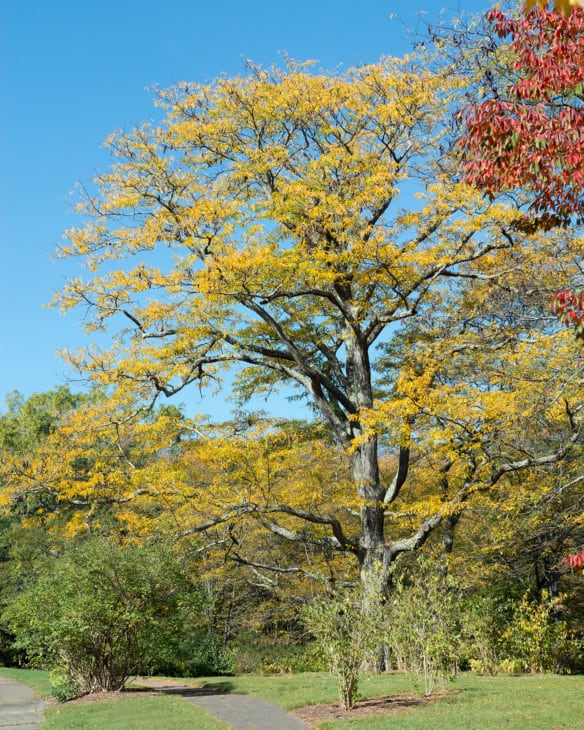
This honey locust cultivar is preferred as it does not produce the pods and thorns of the native North American species. The Sunburst is shorter and has a more pyramid-like shape than the native tree, growing around 30 – 40 feet tall. It prefers hardiness zones 4 – 9.
This deciduous tree produces inconspicuous greenish-yellow flowers in late spring to early summer. It is tolerant of most soil types, has a high tolerance for salty soils, and can withstand salt spray.
With few planting restrictions, the Sunburst honey locust is an easy grower, and the only area it will struggle is deeply shaded areas. Otherwise, it is a good choice for lawns because its foliage allows filtered light through, enabling the growth of grass underneath.
3. Japanese Tree Lilac (Syringa reticulata)
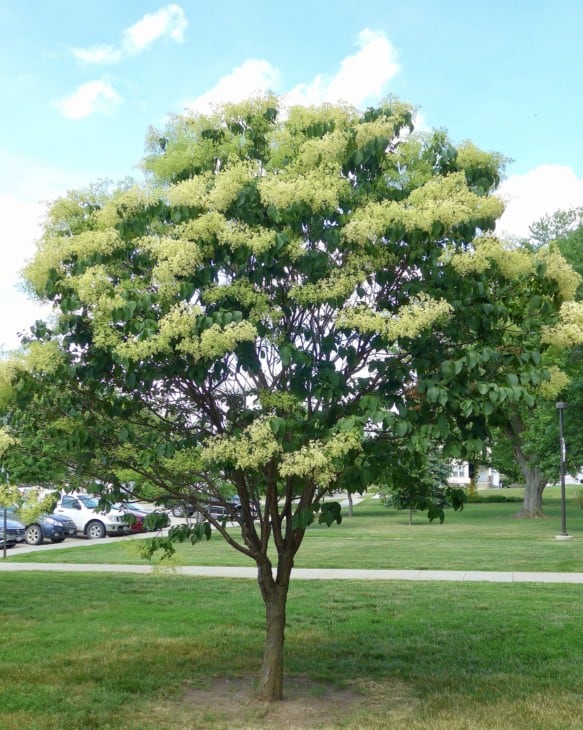
The Japanese lilac is a deciduous tree that grows 20 – 30 feet tall and 15 – 20 feet wide. It produces beautiful panicles of white flowers that can be up to 6 – 12 inches long. This tree prefers hardiness zones 3 – 7 and is native to East Asia.
The Japanese lilac prefers neutral to slightly acidic soil and is tolerant of high salt levels in the ground and salt spray. It grows best in full sun and will happily grow in the partial shade, producing fewer flowers in shaded areas.
These trees are also small enough to grow close to a patio or deck, and as it lacks an aggressive root system, you can also plant them close to driveways, walkways, and septic lines.
Related:
– 23 Different Types of Lilac Trees
– Are Lilacs Poisonous?
4. Eastern Red Cedar (Juniperus virginiana)
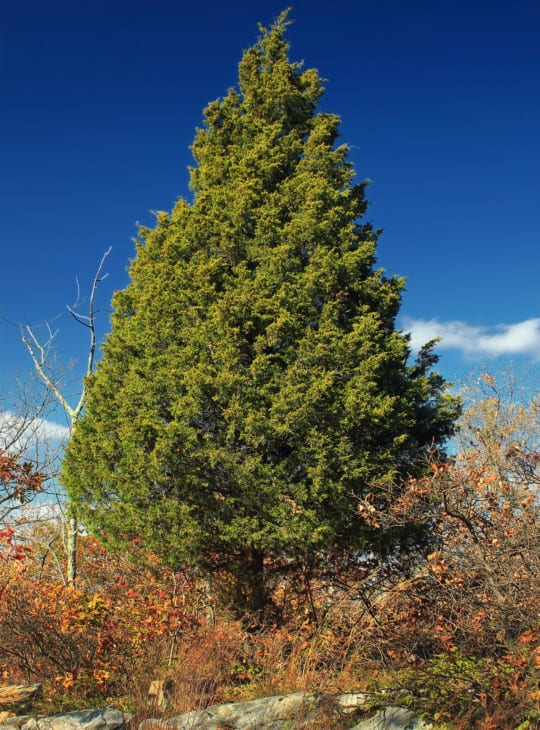
The eastern red cedar can grow up to 30 – 40 feet tall, and occasionally you might find one that is 65 feet tall. This cedar is evergreen and prefers hardiness zones 2 – 9. Native to eastern North America, the eastern red cedar produces small clusters of light blue-green flowers.
The eastern red cedar is naturally drought resistant, rot-resistant, and can tolerate high salt content in the soil, amongst other benefits. It will grow in just about any ground, but it prefers moist soils and is intolerant of constantly wet soils.
Two things to consider when deciding whether or not to plant this tree. Firstly, it would be best not to grow it close to apple trees as it is a carrier for cedar-apple rust fungus. Secondly, this tree is highly flammable, and therefore you should not plant them near your home.
5. Southern Magnolia (Magnolia grandiflora)
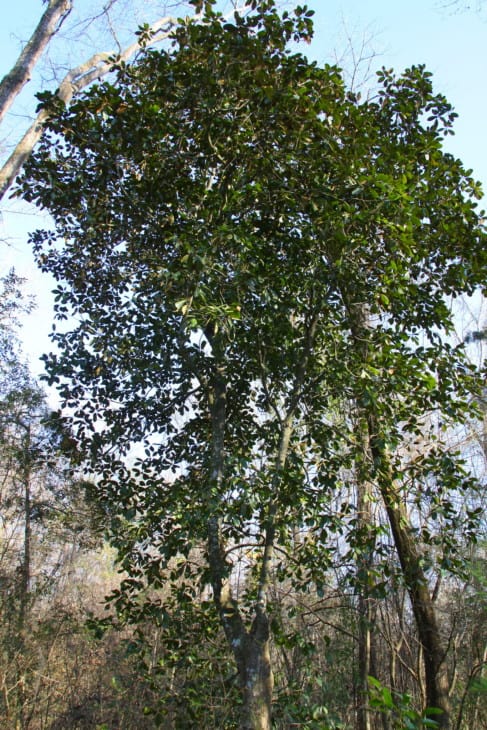
The southern magnolia is an evergreen that typically grows 60 – 80 feet tall and 20 – 40 feet wide. It produces beautiful fragrant large white flowers. This tree is a native of the Southeastern United States and prefers hardiness zones 6 – 10.
These trees prefer well-drained moist soil and are salt tolerant. Although it is still susceptible to some possible salt damage, it is not a good idea to plant it right on a beachfront. The southern magnolia is also tolerant of salt spray, but they grow best if sheltered from the salt air.
The southern magnolia needs lots of space to grow, so make sure that you keep this in mind when planning your planting. You should also try and plant them in an area where they will receive shelter from any strong winds.
In addition to being very tolerant of salty environments, the Southern Magnolia is also highly disease resistant.
6. Ginkgo (Ginkgo biloba)
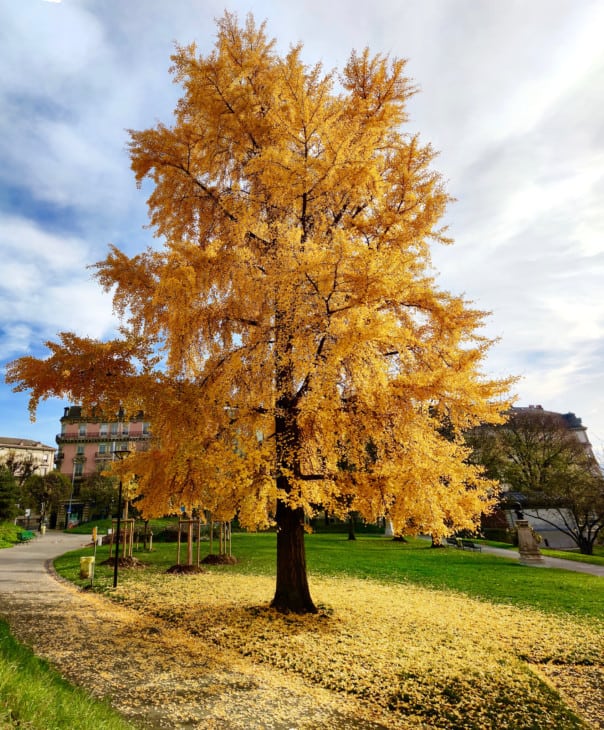
Ginkgo, also known as maidenhair, is a deciduous tree native to China. Growing 50 – 80 feet tall and 30 – 40 feet wide, this tree prefers hardiness zones 4 – 9. The leaves of the ginkgo turn a beautiful golden-yellow during the fall before turning fully gold.
Best grown in full sun, the ginkgo is salt tolerant and is a good choice if you are planting near the ocean. Overall the ginkgo is not fussy about its soil type but does prefer a well-drained loam or sandy soil.
Ginkgo’s are attractive trees, and you can use them as specimen plants in your garden. They are also disease-resistant and tolerant of compact soils. The male ginkgo is preferred to the female as the male does not produce foul-smelling, messy fruit.
Related: 23 Ginkgo Tree Varieties
7. Japanese Black Pine (Pinus thunbergii)
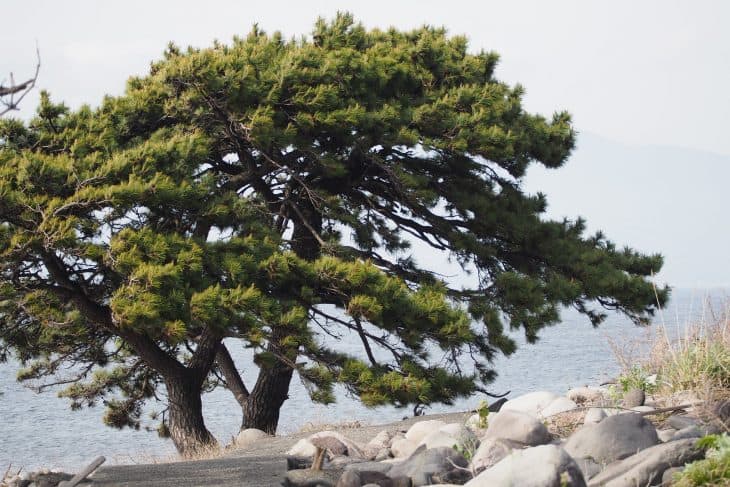
Japanese black pines are native to Japan and Korea. These evergreen trees prefer hardiness zones 6 – 8. Growing 15 – 50 feet tall and 20 – 35 feet wide, they can reach up to 80 feet tall if grown in ideal conditions. They produce silvery-white buds, which form an attractive contrast to their dark green needles.
You can often spot Japanese black pines on beach fronts as they thrive in high salt soils and are highly tolerant of salt spray. This tree is intolerant of poor drainage soggy soils and, therefore, will need to grow in soils that have good drainage but are still moist.
In addition to their salt tolerance, these trees are drought, wind, and deer resistant. Before you plant one of these trees in your backyard, one thing to consider is that they like to litter their surroundings with a large number of twigs, cones, and needles.
8. Devilwood (Cartrema americana)
The Devilwood tree is also known as wild olive, and it is a small, evergreen tree that grows 15 – 20 feet tall and 10 – 15 feet wide. A native of North America, this tree prefers hardiness zones 5b – 9. This tree is attractive and easy growing, producing clusters of small, fragrant, white flowers in the early springtime, followed by small, blue drupes.
The Devilwood tree is pest-resistant and has a high salt tolerance. Naturally occurring in maritime forests, this tree prefers full sun to partial shade and has a moderate tolerance to drought.
Devilwoods are perfect for growing as part of hedges, in tree lawns, and in parking lots. They are compact enough to be planted close to a patio or deck, and you can also treat them as specimen trees.

